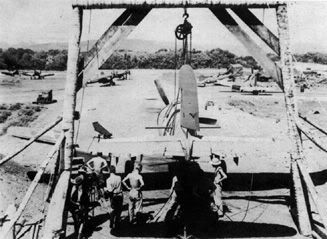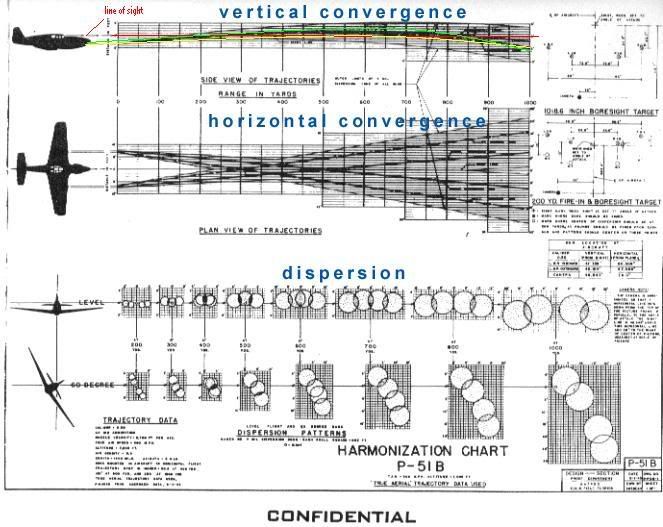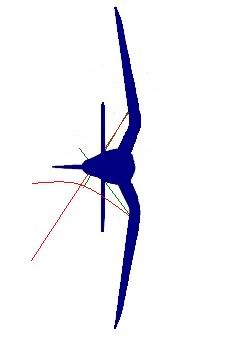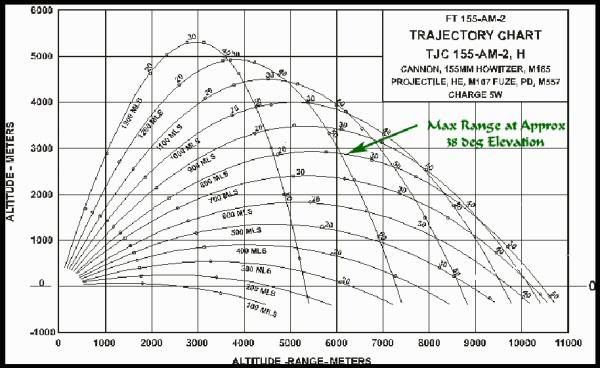If you hardstand with the main gear slightly down a cliff face to make the datum line 0 azimuth or somewhere inside of 17.8Mil nose low of the datum line to reproduce AoA at 15,000 at combat speed. The datum line is the horizontal red line on the target equal to "0" degree when you don't use azimuth in the target command. You will get a very different out come for the F4u. I posted that earlier with the convergence of all guns set to 300. During auto level flight testing, you slow the fighter down with long firing bursts while trying to create good looking dispersion blobs for screen shots. Gets even worse 20k and above trying to test for max range.
That's not the method I use for my testing, and I don't experience the issues you mention.
First of all, I'm not really interested in the AoA at various speeds, because what I'm testing is
the effect of various convergence settings at various ranges. Tossing varying AoA into the picture just adds another variable, and added confusion.
Second, since (while fighting) I'm generally not limiting myself to firing at certain speeds, or at dead-level flight attitude, I don't see any value in working to match specific AoA or speeds. IMO, there's more value in learning what the bullets are doing in as static an environment as possible.
To do that, I think the greatest value can be drawn from the testing only if the pipper is sitting dead-center in the dot-target. That's easy to achieve in auto-level, by adjusting the throttle to control AoA, and giving the plane time to stabilize at whatever speed puts that pipper (and allows it to stay) dead-center in the target. I use lots of zoom to verify that. I don't really care if the plane is flying at X, y, or z AoA, as long as the pipper remains centered on the target.
Next, there's no sustained firing involved in my testing, so I don't have the slowing-effect of firing the guns to worry about. Once again, that's just extra variables thrown in to confuse the results... Instead, I fire in MANY short bursts, giving time between bursts to ensure I'm staying at a stable speed, and my pipper is remaining locked on the target center. My method is more like firing multiple shots from a bench-rested rifle on the range to achieve tight groups. The only difference is that in my "single-shot" world in the fighter a
small sprinkle of bullets goes downrange, rather than one bullet at a time. The groups you see in my screenshots may each have been a result of 20 or more extremely brief trigger-squeezes, all aimed at the same spot, and fired at the same speed.
A hardstand would be nice (but of extremely limited value to players) and I think the whole cliff thing is a lot more effort than is required to learn what this type of experiment has to teach.

I think that beyond the straight/level testing, it's good to know how various attitudes of flight will effect the trajectory of rounds fired, but it's exceedingly difficult to see those in controlled experiments in-game because the lack of autopilot adds so many variable to the puzzle as to hopelessly confuse the results (for most pilots at least). While it's important to know how bullet trajectory "behaves" in the near-perfect straight and level world, it's also important to know how things change when we fire in combat.
This chart is a pretty good representation of how banking affects things:


And once you point your nose up a few degrees, you start affecting the shape of the trajectory as well; once you're firing vertically, there's essentially no trajectory at all (the bullets just go straight up, and then fall straight back down, if we don't have wind or rotational drift modeled). Bullets fired horizontally will display a more curved trajectory (within working ranges), while bullets fired upwards (or downwards) will fly a "flatter", less-curved path (within working ranges).

However, if we fire straight up in the game, our guns are actually aimed beyond vertical, and that has an affect as well... The bullets will cross the line of sight sooner, and will never fall back through it...

Firing straight down (or even upside down) will give similar (but not identical) results (as seen from the pilot's seat).

